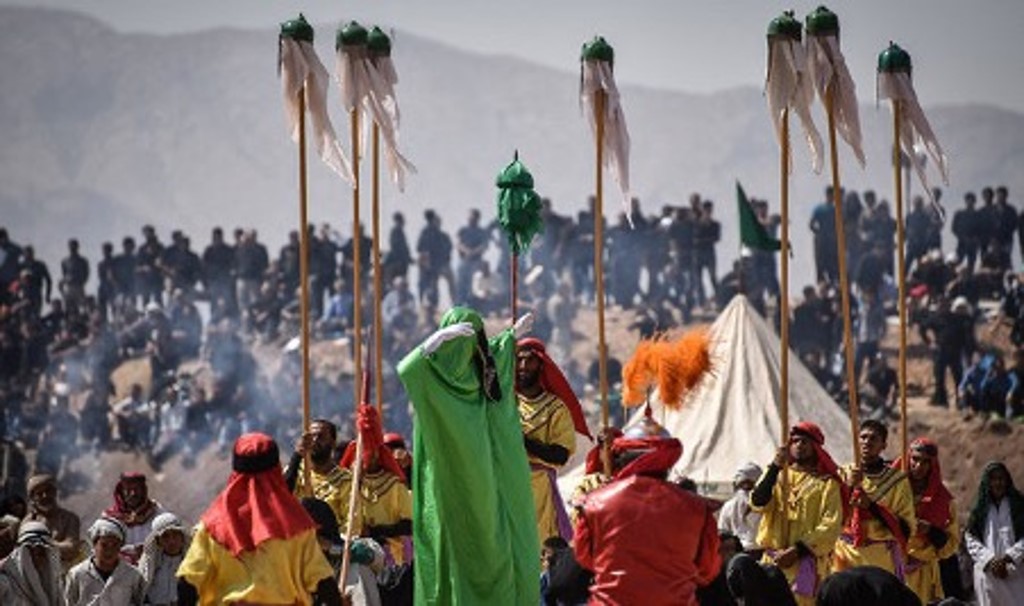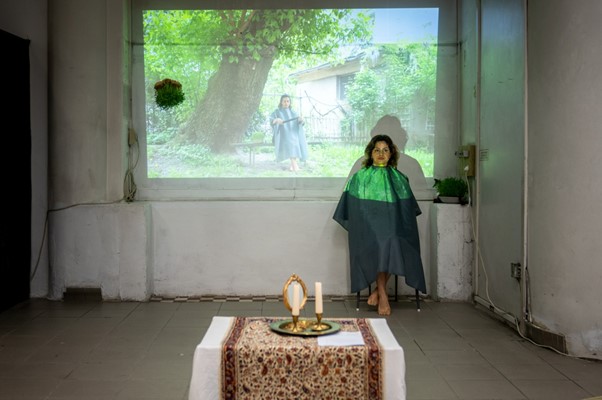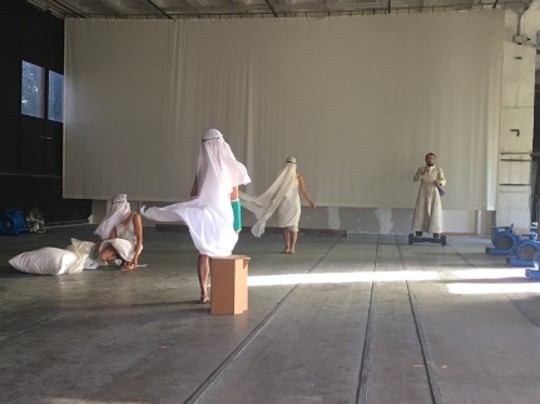The art of unconventionality – Interview with artist Zahra Fuladvand – alumni volunteer edition
The presenter of the Alumni Hungary Webinar in September was our former alumni volunteer, Zahra Fuladvand, who is a well-recognized performance artist from Iran. She did her DLA research at the Hungarian University of Fine Arts with the Stipendium Hungaricum Scholarship and created more of her artworks in Hungary. We asked her about her art, inspirations, and her connection to the Hungarian contemporary art scene.
You are an artist working mainly with performances. Can you explain briefly what performance art means? How did you become interested in this art form?
ZF: Performance art is a contemporary art form that emphasizes live, time-based actions and events performed by the artists often in front of an audience. It blurs the boundaries between traditional art forms like painting, sculpture, theatre, and dance, incorporating elements of each to convey a concept or message.
For me, as an artist, the journey started with classical theatre. I saw my first play when I was 12 years old, and I was amazed by the magical power of the stage and the relationship between the play, the actors, and the audience. I went to university to study directing for the theatre. Gradually, I came to understand that theatre/performances that take place in an outdoor or natural environment, like Taaziyeh (a traditional ritual performance), hold more power for me.

As I delved deeper into this fascination, I became interested in exploring the relationship between performances that occur in unconventional settings and their connection with their audiences. This interest began when I started collaborating with the AV theatre group, one of the first avant-garde theatre groups in Tehran. The rehearsal and performance space for the AV theatre group was an ancient underground thermal bath that had been transformed into a theatre. This unconventional theatre building served as the venue for our productions of “Iranian Carpet” (2012), “Gilgamesh” (2012), and later, the performance “Mel Pa Meni” (2013) in a natural cave environment in the north of Tehran.
Your DLA dissertation and masterpiece examined the connection between human and their environment through ritual performances both from Persian and Hungarian cultures. Why is this topic interesting to you?
This interest began during my master’s study at the Tehran University of Fine Arts when I delved into unconventional theatre environments. This curiosity led me to inquire about the origins of theatre, consequently, I delved into the concept of rituals as the roots of classical theatre.

The initial setting for these ritual performative events was the natural outdoors. My journey aimed to answer questions such as: What was the relationship between the natural environment and its audiences in the early stages of theatre? How did this relationship change with manmade theatre buildings? Why did experimental theatre groups in the 20th century revisit these natural environments for their performances? What is the term of found environment and found audiences? What is the role of the community members in building this relationship between performance and its audiences? In my research, I discovered the “Persian passion play” as a significant ritual performance that still takes place in the natural outdoor environment during the Muharram festival in my hometown. It served as an excellent case study for my exploration to study the relation of this ritual with its audiences in a found environment. I also chose to investigate “Ephemeral works” as my second case study at Artus Studio in Budapest, which are one-day performances that come to life and conclude within a single day.

Artus Studio is well-known in the Hungarian independent theatre scene. How did you work together, and what was this collaboration like?
I arrived in Budapest in 2017 with all my experiences in my head. I was searching for a new environment where I could start my art practices. With the help of my supervisor, Judit Csanádi I got the possibility to work in the abandoned space of the old factory where the Artus Studio is located.
This old factory was my studio during my studies at the Doctoral School of the Hungarian University of Fine Arts. I needed the physical space in which I could create my art pieces, like painters who need a studio to create their paintings. I started to collaborate with professional performers, dancers, and musicians in “The Gate of the Wind” (directed by Gabor Goda) production in 2018 and in the “Ephemeral works series” in Artus Studio. My complex exam for “Darkness before Birth and after Death” was also performed in Artus studio in 2019. This performance represents the gestures of the Iranian funeral ceremony which is connected to the concept of ritual and all my experiences during my collaboration in Ephemeral works series.

How can we imagine your creative process as an artist? How do you get ideas for a new art project, and what comes after you have this idea?
Creating art is like exploring a world full of possibilities. Each artwork is unique and has its own way of creation. My complex exam “Darkness before Birth and after Death”, has been born from the simple image of the Iranian funeral ceremony. In this performance, I try to reflect on how I perceive life as nothing but a continuous dance of birth and death.
Usually, I have strong images in my mind which come from my everyday life. When the concept gets clear, the images find their place and I develop them. I don’t force them. They will come naturally and show me how to arrange them.
Also, the environment is very important in my process of artistic creation. Usually, I start to find the natural space for each art piece. These unconventional environments inspire me in my creative process. Performing in metro line 3 in Budapest (“The Mirror”, 2019) performing in the street in front of my previous building (“280 Days” 2020) creating the video art entitled (“14 Days”, 2019) shot in the hospital room, and (“3 Angles”) video performance shot in an abandoned space of the old factory, Artus studio as well as “Rootedness”(2022) video performance shot in the street, garden and bedroom of my house, are all inspired by their environment.

What are you working on these days, and where we can meet your art next?
In response to your question, I draw inspiration from Peter Schuman’s perspective on the evolving role of art in society. In the past, art served essential functions in people’s lives, such as commemorating weddings, funerals, and childbirths. However, these functions have now largely shifted to commercial and controlled societal mechanisms, leaving art to fulfil a more exclusive role.
In light of this, my future artistic aspirations revolve around fostering community engagement in ritualistic performative events. This endeavour requires substantial time and effort. At present, I am occupied with translating my dissertation into Persian for publication in Iran. Additionally, I have the honour of participating in a group exhibition at DLA, which centers around the theme of “Presence/absence.” This marks my fifth collaboration with this group, beginning with “Parallel Hungary.” For more information on this exhibition, you can visit the following website: https://parallelcollectivehu.cargo.site/
Looking ahead, I am deeply motivated to expand my research into “Ritual Environmental Performance.” My objective is to explore both the shared cultural elements and unique differences found in materials and traditions across various cultures. Ultimately, I aim to create performances that incorporate ritual gestures from diverse cultural backgrounds.
If you want to watch the webinar of Zahra, or the previous talks of the Alumni Hungary Webinar Series, join the Alumni Network Hungary HERE!